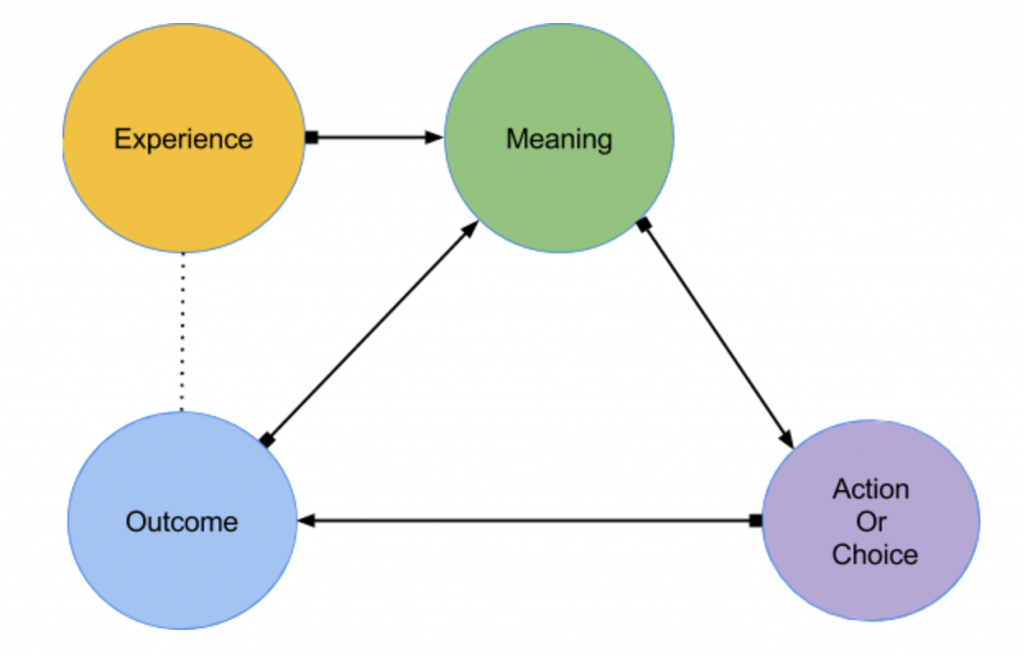While reading the New York Times‘s survey of therapists about the mental health crisis co-occurring with the COVID-19 pandemic, I could only nod my head. Even operating my own private practice I have noted the tremendous increase in demand for services beyond my capacity to meet it; the difficulty of finding therapists who are financially accessible to clients in need or even simply taking on new clients; the limits of my own capacity to meet the need; and the increased acuity in what my ongoing clients are dealing with in their own work.
I believe the ongoing transformation our culture is undergoing will continue to demand changes of mental healthcare, both what we think of as mental healthcare and how it works. Already Telehealth is becoming a normal way of delivering care rather than an inferior and exceptional method.
I find myself wanting to go back to basics. What is health? What is mental health? Our collective definitions of those words tend to base itself on a state of being conducive to surviving in a capitalist empire: capable of continuing to work and ideally producing children so we have future workers. On top of that foundation we lay all our dreams and fantasies of ecstatic life, a robust immune system that defeats all invaders, emotional intimacy that’s not threatening, wealth, and status with spiritual attainment.
The thing about that is, most of those expectations come from a world we no longer inhabit. So we are in a time of thick fog, trying to follow a path once suggested to us that we can no longer see. We can hardly feel confident about what we think is coming down the path.
From a trauma-informed perspective, all the ways that we respond to stress, confusion, and lostness are completely rational ways our system is trying to keep us going. Even the ones that feel shameful. And, as we know, those responses tend to have their own limitations. They’re about getting through the moment rather than stepping back to rethink the goal.
We need to get lower to the ground, to feel and sense our way through, until the fog clears and we can see again.
Since I cannot be a therapist to everyone, and you may have contacted thirty people who mostly didn’t call you back and you’ve given up on getting help, I wanted to offer you this ritual. It does not offer answers, or make everything okay, but it can support you in finding your way through.
When you are in distress, overwhelmed, enraged, or at your limit—or feel yourself reaching that moment—I encourage you to take time to do this full ritual. Above is an audio recording if you want my voice to guide you through the steps, or you may print this text or copy it onto your device.
This ritual uses the five elements of the Western tradition: Air, Earth, Water, Fire, and Spirit. I am drawing upon my own spiritual practice, traditions, and training, and offer this to you with no expectation that you commit to any particular path. If you have familiarity with this kind of work you may notice that I guide you to move counter-clockwise, which is the direction of dispersal.
Try find a space where you can be undisturbed for twenty to thirty minutes. Turn off notifications on any devices and ask folks to leave you alone, unless they want to participate with you. You are encouraged to speak out loud with vigor if you can do that in your space, but “speaking” within your mind is okay if that’s what you need to do. I wrote this to be as accessible and simple as possible, but there is space to add more. You may, if you wish, add a representation of each element in the four directions named—a photo, a colored candle, an object that represents the element, and so forth.
The ritual is written for one person, but if you have co-participants, here are two possibilities: you could do the ritual as written together, having your own experiences. Or, you can take turns sharing and witnessing. For example, when working with air, one person could share out loud the stories of their distress, while the other person simply witnesses—not responding with comments, suggestions, or judgments, simply being with it. Then you can switch, where the witness speaks and the speaker witnesses.
I recommend you do the whole ritual the way I’ve presented at lease once before modifying it, but if you find any piece is inaccessible please make whatever changes are necessary. After you’ve done the whole ritual once, you may find one or two elements work well for you, and you can use them as needed.
Begin in the center of your space. Inhale and then exhale until your breath has completely emptied out three times, imagining as you exhale that you are sinking into the ground, which receives the weight of your burdens, stress, and tension.
Then begin square breathing: inhale for a count of four; hold for a count of four; exhale for a count of four; and then hold for a count of four. Return to this pattern of breathing throughout the ritual when you need to center or settle, but do not stress about doing it continuously, especially when speaking.
Say:
I who am the beauty and strength of the earth
made skin and bone, blood and fat and muscle,
call to those who would love and honor my need,
and send away any who would bring me harm;
may you find a place for your own ease.
Turn toward the east. Imagine there is a breeze blowing eastward, toward the rising sun or, if you like, another star in space. Tell the breeze your stories of distress, what burdens and bothers you, what brings you anxiety and fear. If you can, speak these out loud. Imagine the breeze carries these words from you into the light and heat of the sun.
When you feel complete, turn toward the north. Imagine your body is a snow-covered mountain at the top of the world. Notice any tension, pain, tightness, or constriction, or unpleasant sensations. Imagine the coolness of the snow sinking in to soothe your pains, or the melting waters carrying your burdens into the earth.
When you feel complete, turn toward the west. Invite into your awareness any emotions you are having, even if those emotions are numbness and emptiness. Imagine there is a river moving through you, and you can pour or allow these emotions to mingle and flow with the currents of that river moving toward the wide, deep, vast ocean, where there is space and room for every feeling. If it feels right, let yourself broaden and deepen to become the ocean.
When you feel complete, turn toward the south. Imagine a fire, and notice what kind of fire you imagine. Does it feel wild, big, and uncontained? If so, keep breathing and staying with this flame until it starts to settle and gather into something more manageable. If it feels cold, sluggish, or small, imagine that your breath can kindle and strengthen its flames until it reaches a vitality that seems right to you. Imagine that you can offer the fire any burdens or beliefs you carry that feel draining, diminishing, or bring you to a sense of hopelessness. Watch as these burdens transform into living flame.
When you feel complete, sit in the center, facing any direction. Return to the square breath. On one inhale, imagine you can breath energy and support from the earth, through your body, and then exhale it up through your head into the sky. On the next inhale, imagine you can breathe expansion and clarity from the sky, through your body, and then exhale it into the earth. Follow this pattern for three or four cycles, and then shift, breathing earth and sky energy into your belly, then breathing it out from your heart, as though sending its energy in all directions.
Invite yourself to remember all the times you’ve helped others, been a support to them, or had the impact you wanted to have in the world. Try to notice what comes up without judgment, simply as information. Then, invite yourself to remember the times others have helped you, whether they are friends, loved ones, or strangers. Maybe some of these memories carry pain, and notice that, but try to stay with only attending to ways you’ve been helped.
Ask yourself to think of three people you could contact today to check on, connect with, or ask for support. Keep going until you’ve come up with three names, and write them down if necessary.
Offer gratitude to the elements in whatever way feels true to your heart, using words, gestures, breath, or even a smile. Then go and reach out to one of those three people. If they are not available, reach out to the next, and then the next.





